 |
| |
|
Friday Jul 18 2025 05:38PM ET
º
º
º
º
º
|
|
| |
Yamaoka Tesshu, as a young student of Zen, visited one
master after another. He called upon Dokuon of Shokoku.
Desiring to show his attainment, he said: "The mind,
Buddha, and sentient beings, after all, do not exist.
...
continue...
|
|
|
|
z
.
e
.
n
|
| |
STORIES, BOOKS & MEDIA

The majority of the following books are from the library of Chon Tri. Many of the summaries and in his own words. If you wish to purchase the book, click on the cover image and you will be linked to Amazon.com.
| Select a Category » |
[
Foundation
]
[
Practice
]
[
Sutra & Sastra
]
[
Koans
]
[
Works
]
[
History & References
]
[
Essays & Studies
]
[
Others
]
» Buy this book
» Recommend a Book
|
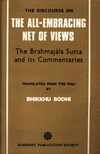
|
41. SUTTA: ALL-EMBRACING NET OF VIEWS, A TRANSLATION OF THE BRAHMAJALA SUTTA & ITS COMMENTARIES
by Bhikkhu Bodhi (translator)
Publisher: Pariyatti Press (ISBN #: 955240052X, 5.5x8.5x1 - Hardcover - 350 pages, January 1992)
» Submit a review
Summary
In this well-known Sutta, the Buddha himself dealt with all the views of the other religions and philosophies in his time.
Zen masters often extracted segments from this Sutta, made them into koans and assigned to their students.
|
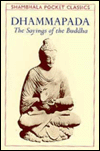
|
42. SUTTA: DHAMMAPADA, THE SAYINGS OF THE BUDDHA
by Thomas Byrom (translator)
Publisher: Shambhala (ISBN #: 0877739668, Pocket size - Softcover - 113 pp, January 1993)
» Submit a review
Summary
If the Saying Records of Zen masters such as Matsu, Po-Chang, Chao-chau, Huang-po, Linchi...are the green forests, then The Sayings of the Buddha - Dhammapada - is the clear and pure stream running through all of those forests for thousand years now. The stream especially run through anyone who drinks it, feels cool, quiet, and peaceful...
Translated from Pali by Thomas Byrom
|
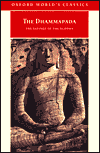
|
43. SUTTA: DHAMMAPADA: THE SAYINGS OF THE BUDDHA
by John Ross Carter (Editor), Mahinda Palihawadana (Editor)
Publisher: Oxford University Press (ISBN #: 0192836137, Paperback: 112 pages, September 2000)
» Submit a review
Summary
From the Publisher
The Dhammapada, the Pali version of one of the most popular texts of the Buddhist canon, also ranks among the classics of the world's religious literature. This critical edition presents to the English reader for the first time the Dhammapada as it has been known throughout the centuries. With this volume, Carter and Palihawadana make a major contribution to the understanding of the Dhammapada, not only by presenting a new and accurate translation of the verses, but also by enabling readers to see the wake of this remarkable text through centuries of Buddhist tradition. In addition to the original Pali, the editors provide a translation of the commentary on the verses and the subsequent brief explanations of verse and commentarial passages provided by Sinhala sources.
|
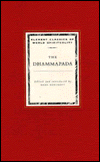
|
44. SUTTA: THE DHAMMAPADA
by Anne Bancroft (editor)
Publisher: Element Books Ltd (ISBN #: 1852309210, Hardcover: 106 pages, March 1997)
» Submit a review
Summary
Book Description
The Dhammapada ("dhamma" meaning teaching and "pada" meaning path) is perhaps the best-known Buddhist text, consisting of 423 verses compiled in the 3rd century BC. Though not lengthy, these teachings gather what are said to be Buddha's utterances over many years as collected by his disciples. His words reveal nothing less than the Buddhist Law of the Universe. Simple and profound, these truths are the key to understanding Buddhism.
|
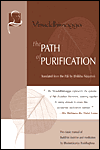
|
45. THE PATH OF PURIFICATION: VISUDDHIMAGGA
by Bhadantacariya Buddhaghosa; Bhikkhu Nanamoli (editor)
Publisher: Pariyatti Publishing (ISBN #: 1928706002, Hardcover, 950 pp, September 2003)
» Submit a review
Summary
From the Publisher
One of Buddhism's foundational texts, the Visuddhimagga is a systematic examination and condensation of Buddhist doctrine and meditation technique. The various teachings of the Buddha found throughout the Pali canon are organized in a clear, comprehensive path leading to the final goal of nibbana, the state of complete purification. Originally composed in the fifth century, this new translation provides English speakers insights into this foundational text. In the course of this treatise full and detailed instructions are given on 40 subjects of meditation aimed at concentration, an elaborate account of Buddhist Abhidhamma philosophy, and explicit descriptions of the stages of insight culminating in final liberation.
|
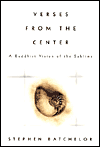
|
46. VERSES FROM THE CENTER: A BUDDHIST VISION OF THE SUBLIME
by Nagarjuna; Stephen Batchelor (translator)
Publisher: Putnam Publishing Group (ISBN #: 1573221627, Hardcover, 208 pp, April 2000)
» Submit a review
Summary
From the Publisher
The understanding of the nature of reality is the insight upon which the Buddha was able to achieve his own enlightenment. This vision of the sublime is the source of all that is enigmatic and paradoxical about Buddhism. In Verses from the Center, Stephen Batchelor explores the history of this concept and provides readers with translations of the most important poems ever written on the subject, the poems of 2nd century philosopher Nagarjuna.
|
|
|

SUPPORT ZENGUIDE.COM

Purchase posters, art prints, media (music CD & DVD)
 ZONE OF PEACE
ZONE OF PEACE
by
→Puchase this Item
→More Art Prints & Media
→Zen & Buddhism books
|
|
|
s
.
t
.
o
.
r
.
i
.
e
.
s
.
,
.
.
b
.
o
.
o
.
k
.
s
.
.
&
.
.
m
.
e
.
d
.
i
.
a
.
|















 ZONE OF PEACE
ZONE OF PEACE





